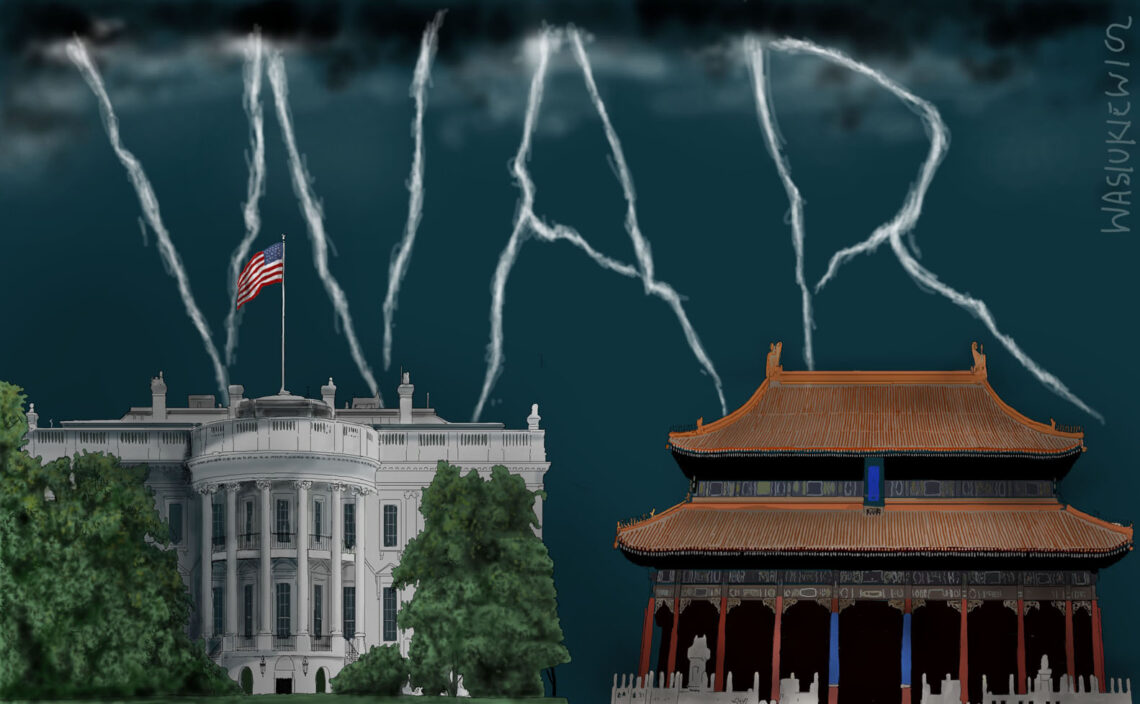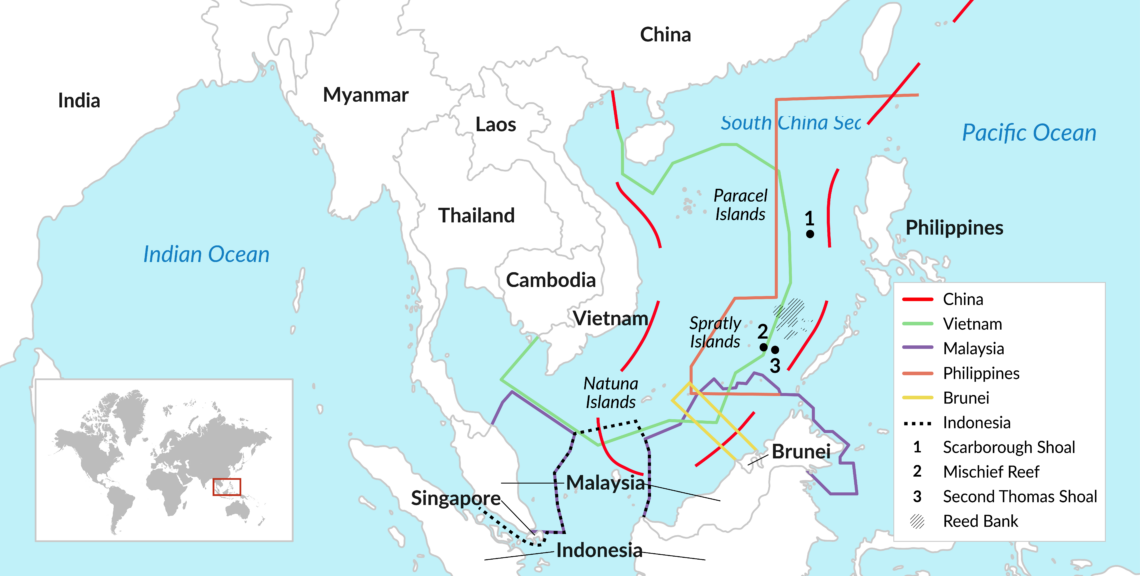Is a major war conceivable?
An attack on Taiwan would likely prompt a military response from the United States, which could in turn lead to a broader conflict in the Indo-Pacific. Unless Chinese expansionism is kept in check, Beijing will only grow bolder.

The large island of North America is separated by two oceans from the Eurasian-African landmass. Its size gives the region several advantages, including almost complete – but not total – independence when it comes to critical raw materials. The two oceans that surround the United States also protect it from enemy invasions. As the example of the British Empire shows, this type of location is the ideal basis for hegemony, as it also allows control of the seas.
Brzezinski doctrine
During the Cold War, Washington’s main objective was to prevent the Soviet Union from gaining access to the North Atlantic. The U.S. protected the surrounding seas and kept potential conflicts outside of its own territory. Zbigniew Brzezinski, a U.S. security advisor in the 1970s, developed a doctrine requiring that the U.S. prevent a rapprochement between Western Europe and the Soviet Union at all costs.
The American policy, in force since the end of World War II, had the significant advantage of protecting free Europe against the Soviet Union. The only downside is that this comfortable situation led many European countries to neglect their own defense capacity. Although the Soviet Union has since imploded, the U.S. is still guided by the Brzezinski doctrine when it comes to Europe’s relations with Russia.
One of China’s main objectives is to break through the line of U.S. allies that limit its access to the ocean.
However, a new contender has risen west of America – China. Understandably, Washington has created coalitions to defend the free world and made allies on the Chinese coast, preventing the Middle Kingdom from advancing into the Pacific. The chain formed by South Korea, Japan through Okinawa, Taiwan, the Philippines and Singapore curtails Beijing’s access. Furthermore, Vietnam is growing closer to the U.S. because of worries over Chinese hegemony.
Washington is also strongly courting India, which has had skirmishes with China in the Himalayas. New Delhi is also highly concerned because of China’s growing naval power and economic involvement in the Indian Ocean.
Since President Xi Jinping came to power, it is obvious that Beijing considers itself an alternative to American domination. Although Mr. Xi assured the leaders of the ASEAN group (an association of Southeast Asian countries) that China has no hegemonic objectives, the claim is unconvincing. Beijing claims territorial waters in the South China Sea, mainly to the detriment of Vietnam and the Philippines. One of China’s main objectives is now to break through the line of U.S. allies that limit its access to the ocean.
Facts & figures
A tangled web in the South China Sea

Attack on Taiwan
Taiwan is another major issue. China denies its independence, and it is one of President Xi’s main objectives to “reunite” the island with the mainland. This can only be achieved by force or continued threats, as the Taiwanese population does not want to live under communist rule. After having concentrated all state power in his own hands, Mr. Xi wants to deliver on his promises to bring Taiwan back into the fold. But the other reason why he will aggressively pursue this goal is that an annexation would break the U.S. line of defense and give China access to the Pacific.
China has made huge investments to boost its defense capabilities. It has formidable new equipment, the largest army in the world and it is developing its navy and air force at breathtaking speed.
Much like with Western Europe during World War II, an attack on Taiwan would be considered an attack on the U.S. in Washington, thus triggering an American military intervention. This would mean U.S. soldiers directly fighting Chinese troops, or the U.S. Navy and Air Force intervening. But President Xi cannot risk a defeat in Taiwan.
The U.S. has built defense groups in the region. The Quad includes Australia, India, Japan and the U.S. In addition, there is the newly formed Anglo-Saxon alliance between Australia, the United Kingdom and the U.S., AUKUS.
If the Western world abandons Taiwan, Beijing will become more assertive.
Beijing, like Washington, has nuclear weapons. With the Soviet Union, the threat of mutual assured destruction prevented war. Is that still the case? Could a conflict concentrate on smaller tactical nuclear interventions instead of large strategic ones? Or would a major conflict be carried out with the implicit understanding not to use nuclear weapons?
This situation has all the ingredients needed for an armed conflict. China might feel the same limitations that brought imperial Japan to overrun the Pacific region, causing World War II to spread there. The Japanese empire was convinced of its military power and used it. As Tokyo was inherently weaker than the U.S., they believed blitzkrieg warfare was their only chance.
China is now more powerful than Japan was back then. But the Japanese had direct experience with war, while Beijing does not.
Fortunately, both China and the U.S. know dialogue is necessary, and this may prevent hasty, dangerous decisions. But, as discussed above, there are multifaceted tensions that could trigger a war, not to mention other forms of hybrid attacks like cyber warfare.
If China risks war with the U.S. over Taiwan, it could logically attack and occupy other countries in the Pacific area in an attempt to bring the conflict farther away from its shores. We can only hope this will not take place. But if the Western world abandons Taiwan, Beijing will undoubtedly become more assertive.
